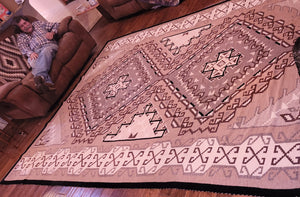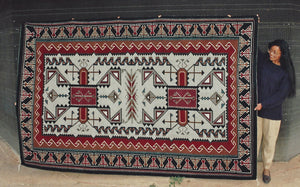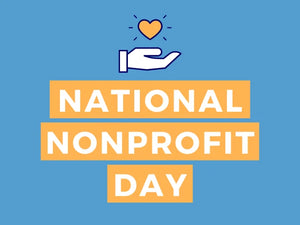Symbols and Motifs in Navajo Weaving

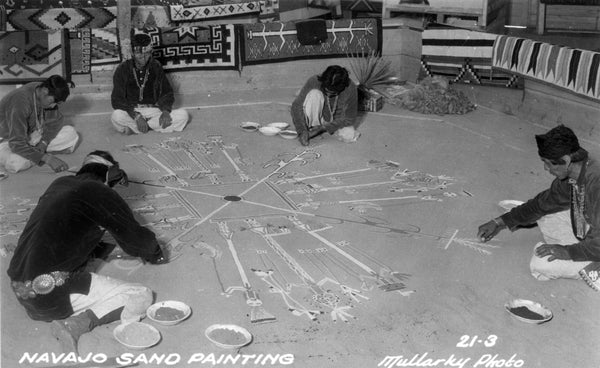 The Navajo people have a rich history of beautiful traditions that are proudly passed down from generation to generation; many of which can be seen in the gorgeous weavings and tapestries of the Navajo weavers.
The Navajo people have a rich history of beautiful traditions that are proudly passed down from generation to generation; many of which can be seen in the gorgeous weavings and tapestries of the Navajo weavers.
Like most storied cultures, the Navajo believe in powerful deities and forces that have guided them on their path through life; be it traveling by the sun’s rays, learning to live in harmony by Changing Woman, or building a framework for life by using the teachings of Spider Woman.
As such, there are a few very distinct designs, patterns, and motifs that can be found in both past and present weaving styles. Below are just a few of the more iconic and storied traditions used by weavers young and old.
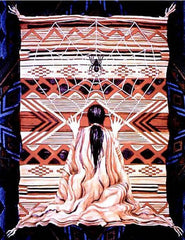 Spider Woman
Spider Woman
Being that Spider Woman taught the Navajo how to weave, it’s only fitting she dominates much of the early weaving work done by the Navajo people. That’s why many early blankets featured a cross representing Spider Woman and her teachings. Though methods on placement vary, it’s widely considered taboo to place this cross within a diamond, square or triangle pattern so as not to “trap” her in the work; thus, you’ll often find a hole (figuratively or legitimately) woven into the piece.
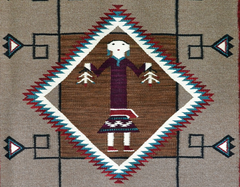 Navajo Homeland
Navajo Homeland
Navajo weavers, like anyone proud of their motherland, would often capture elements of the four sacred mountains of the Navajo homeland in their work. From wearing blankets to modern-day rugs, the use of diamonds and triangles have become cornerstones for representing the “Dinétah” and the beautiful land they call home.
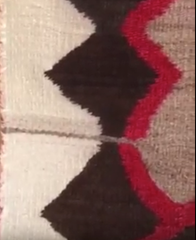 Spirit Line
Spirit Line
At the turn of the 20th century, weavers began to popularize what we now know as the “spirit line.” This developed because traders of the era wanted borders around these weavings and the Navajo weavers were worried this style would trap their creativity and limit the future work. The spirit line then became a thin contrasting line that ran from the inner weaving to the outer edge to ensure that the creative spirit could still be found.
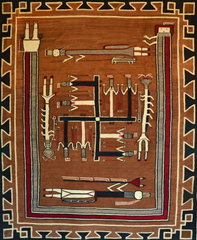 Whirling Logs
Whirling Logs
One of the most iconic (and controversial) design elements up until the 1930's was the whirling logs design. Often mistaken for the Nazi “swastika”, the logs were originally chosen as a symbol of good luck and represented all things good to the Navajo. As you can imagine, this style didn’t prevail through WWII.
 Lightning
Lightning
A powerful elemental force symbolizing much among the Navajo people, lightning embodies strength and power for the weaver, the culture, and even the weaving itself. These “zigzag” weaving styles are most often found in the Eye Dazzler and Germantown designs, creating gorgeous designs that give each rug or blanket its own fantastic energy.
Other Notable Inspirations
Like many early civilizations, the Navajo weavers were inspired by their unforgettable pasts. Weavers would often find inspiration in pictographs, prehistoric pottery, petroglyphs, and even the natural color palettes around them.
- jamie getzwiller




